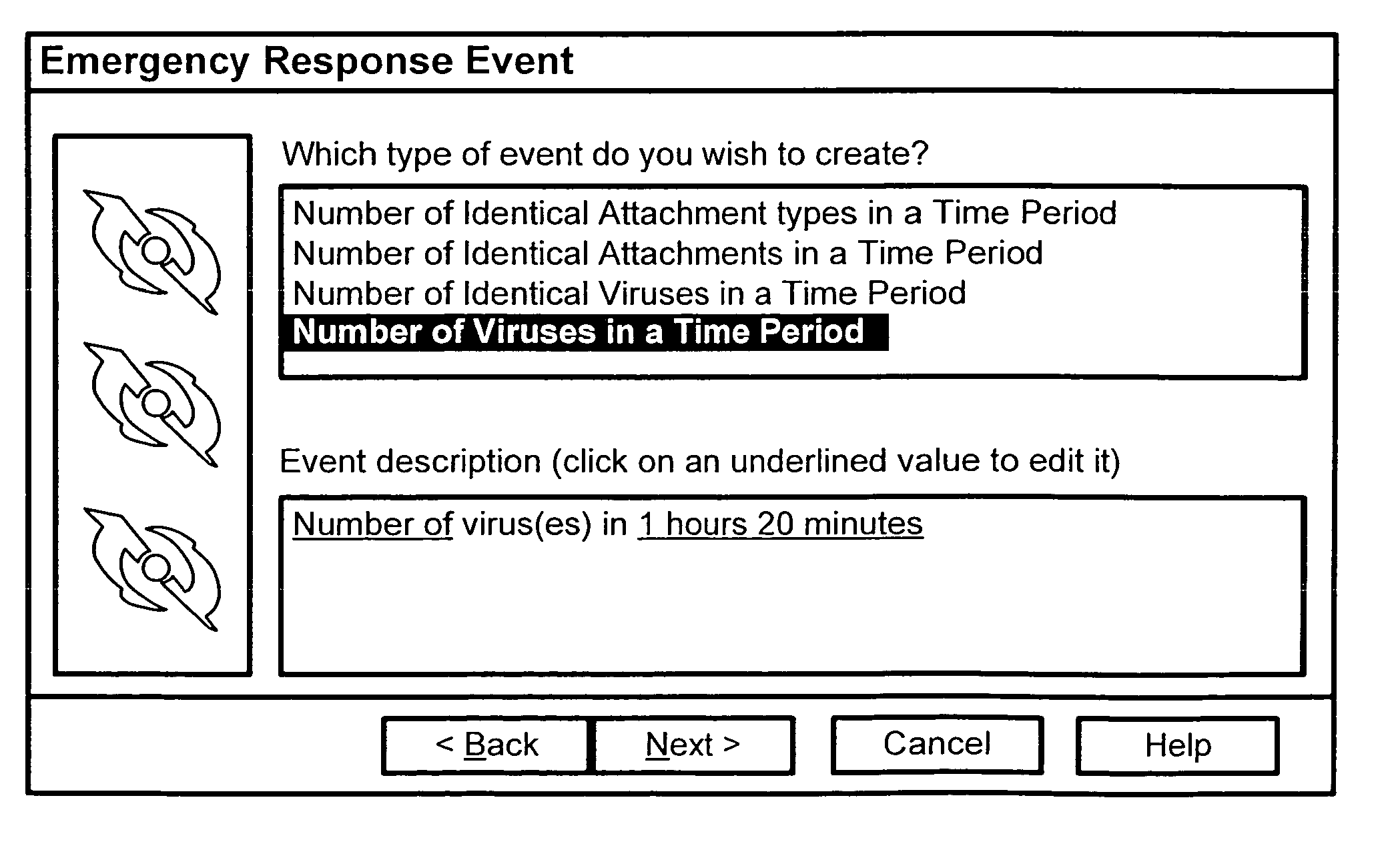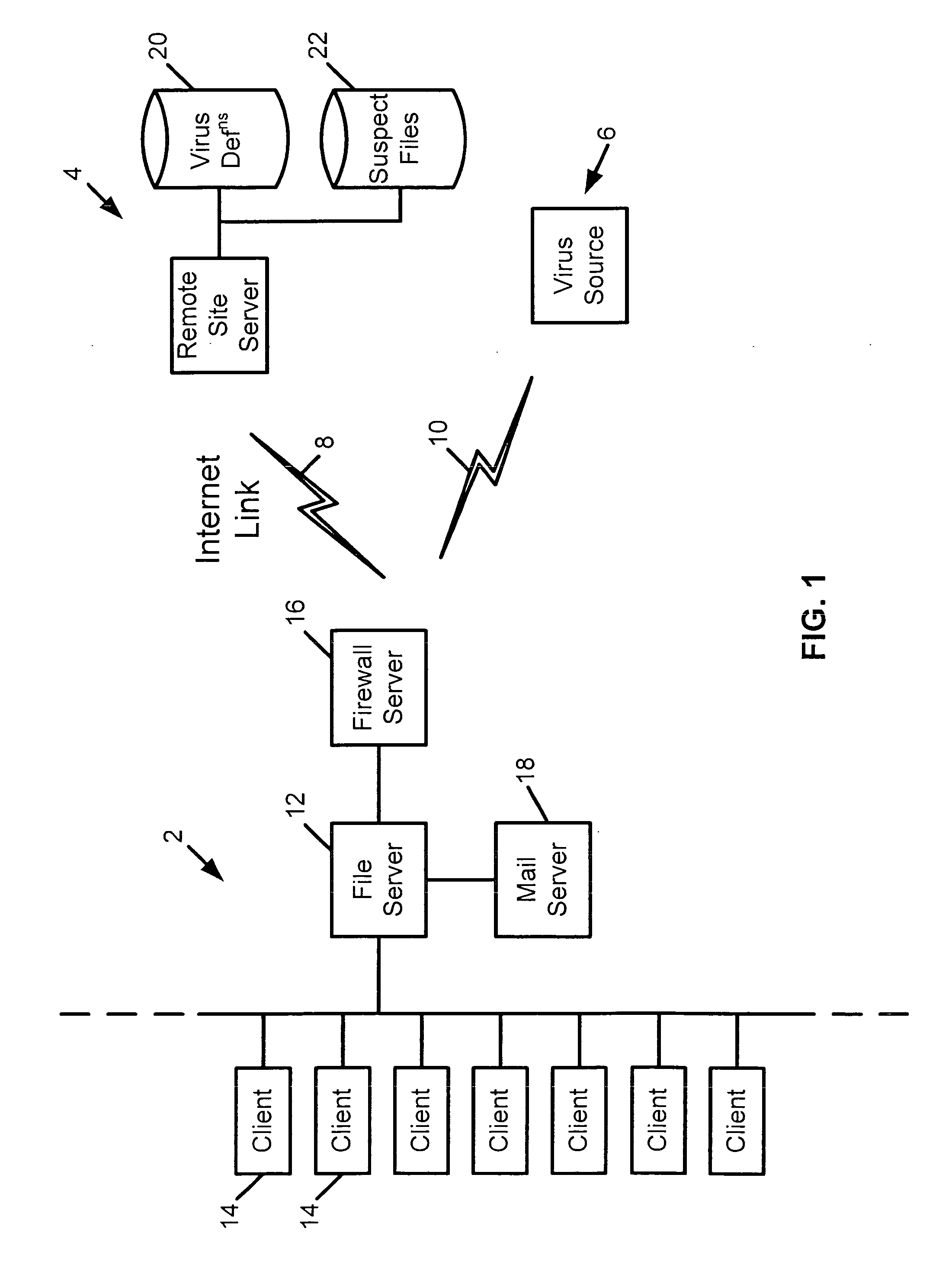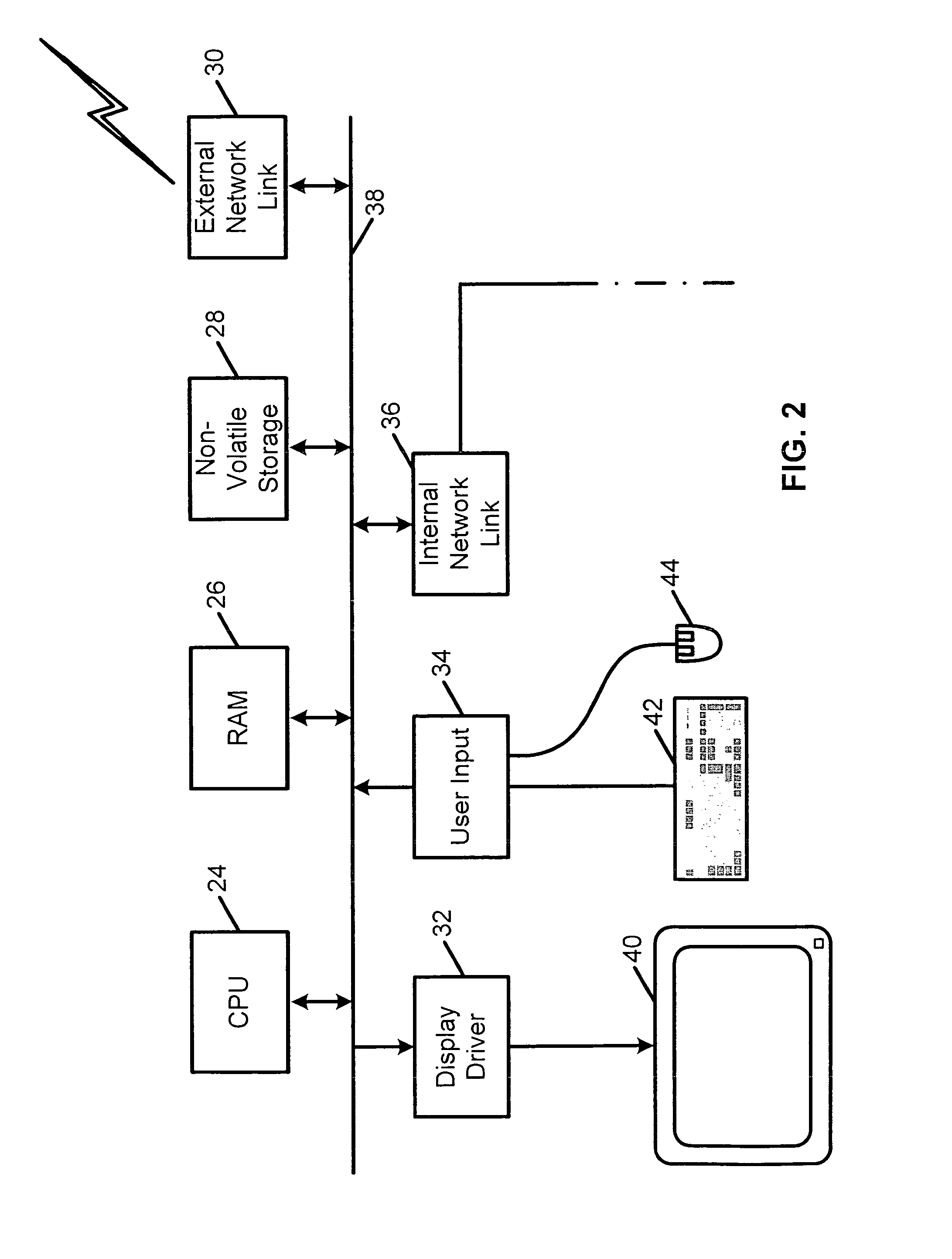Computer virus detection
a virus and computer technology, applied in the field of data processing systems, can solve problems such as the problem of heuristic identification, the technique does not address unknown viruses and types of virus behavior, and is generally capable of detecting known viruses or viruses that behave in known ways
- Summary
- Abstract
- Description
- Claims
- Application Information
AI Technical Summary
Benefits of technology
Problems solved by technology
Method used
Image
Examples
Embodiment Construction
[0034]FIG. 1 shows a computer system 2 coupled to remote computer systems 4 and 6 via internet network links 8, 10. The computer system 2 comprises a local area network. The local area network 2 is formed of a file server 12 to which a plurality of client computers 14 are linked by conventional local network connections. The file server 12 is linked to the remote computers 4, 6 via a firewall server 16 that serves to resist hacking and other security attacks. A mail server 18 coupled to the file server 12 provides E-mail services to the local area network 2. More particularly, the mail server 18 receives E-mail messages with associated attachments from remote computers.
[0035]A remote computer 6 may be a virus source. The virus source 6 may be unwitting in that it is merely passing on an infection it has itself incurred. Alternatively, the virus source 6 could be controlled by the virus originator. A computer virus may be introduced into the local area network 2 from the virus source...
PUM
 Login to View More
Login to View More Abstract
Description
Claims
Application Information
 Login to View More
Login to View More - R&D
- Intellectual Property
- Life Sciences
- Materials
- Tech Scout
- Unparalleled Data Quality
- Higher Quality Content
- 60% Fewer Hallucinations
Browse by: Latest US Patents, China's latest patents, Technical Efficacy Thesaurus, Application Domain, Technology Topic, Popular Technical Reports.
© 2025 PatSnap. All rights reserved.Legal|Privacy policy|Modern Slavery Act Transparency Statement|Sitemap|About US| Contact US: help@patsnap.com



